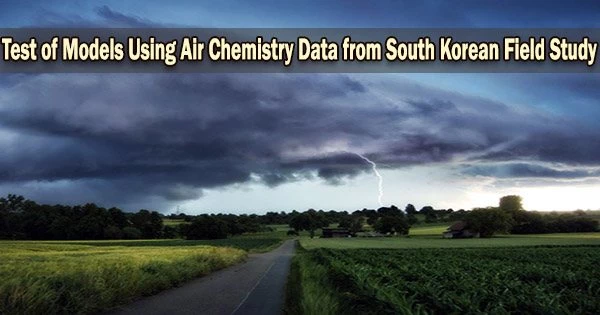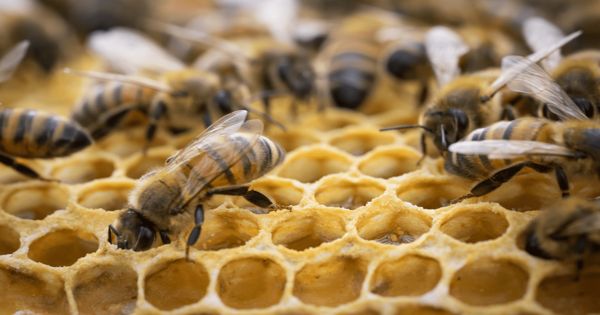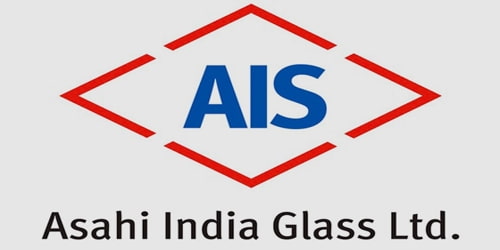According to a group of scientists, new information about the atmospheric chemistry that causes ozone pollution may come from an international effort to measure air quality in South Korea, a region with complicated sources of pollution.
“This study shows that observations of the hydroxyl radical OH and hydroperoxyl radical HO2 provide valuable tests of the ability of our photochemical models to correctly represent atmospheric chemistry, especially in environments with high levels of pollution,” said William H. Brune, distinguished professor of meteorology at Penn State.
The hydroxyl radical starts significant chemical reactions all over the atmosphere, including in the troposphere, which is the lowest part of the atmosphere that can reach the Earth’s surface. Here, the reactions purify the air but can also cause ozone pollution in urban areas, according to the scientists.
The team analyzed airborne measurements of the hydroxyl radical, hydroperoxyl radical and about a 100 other chemical species taken during flights over South Korea in 2016 as part of a joint field study between NASA and the Republic of Korea, called Korea-U.S. Air Quality (KORUS-AQ).
When the uncertainties in the data and models are taken into account, the researchers found that the aerial measurements of the hydroxyl and hydroperoxyl radicals coincided with values generated by independent models operating at NASA Langley Research Center and Penn State.
“One major finding is even in a complex environment like this we have a good handle on the basic chemistry in our models,” Brune said. “We can really say this chemistry is correct within the uncertainties, and that tells us something about ozone production.”
This study shows that observations of the hydroxyl radical OH and hydroperoxyl radical HO2 provide valuable tests of the ability of our photochemical models to correctly represent atmospheric chemistry, especially in environments with high levels of pollution.
William H. Brune
According to the experts, ozone is created when nitrogen oxides, such as those from car and power plant emissions, and volatile organic compounds, which are formed naturally by plants but also by solvents and other harsh chemicals made by humans, mix in the atmosphere in the presence of sunshine.
“But these elements can’t do much themselves, they need something to make the chemistry active, and that is the hydroxyl radical,” Brune said. “It drives the chemistry, kind of like a low-temperature version of the flame heating your house.”
When the researchers compared their measurements of the radical’s reactivity the total of its reactions with all chemical species they discovered less agreement than they had with their measurements of the hydroxyl radical, which were taken during the flights.
“It’s really a key number because a very high hydroxyl radical reactivity means you’re in a very polluted environment, or an environment that has a lot of things being emitted that are reacting with the hydroxyl radical,” Brune said.
According to the researchers, who published their results in the journal Atmospheric Environment, it was sometimes impossible to account for as much as half of the hydroxyl radical reactivity when comparing the measured hydroxyl radical reactivity to the hydroxyl radical reactivity calculated using all the other measurements.
This missing hydroxyl radical reactivity originated primarily from the Korean peninsula, potentially helping to distinguish the sources between pollution emitted by industry in South Korea and older pollution that blows in from China, the scientists said.
“We invented this idea of measuring hydroxyl radical reactivity about 25 years ago and we’ve found missing reactivity in forests and all kinds of other places,” Brune said. “And while we are now much better at closing the gap between measured and calculated hydroxyl radical reactivity, in South Korea we thought we were measuring everything, and we clearly weren’t measuring everything.”
Improving our understanding of this reactive chemistry is important, Brune said, because that information can inform regional and global air quality models.
“These models have a hard time predicting really harmful amounts of ozone,” he said. “Hopefully our results will help them figure out the problem so that they can be used by policy makers to efficiently reduce ozone levels, not just in the U.S., but around the world.”
Other Penn State researchers on this project were David Miller, assistant research professor and Alexander Thames and Alexandra Brosius, graduate students.
Scientists from the University of California, Irvine, NASA Langley Research Center, University of Colorado, Boulder, NASA Goddard Space Flight Center, Georgia Institute of Technology, California Institute of Technology, University of Virginia, University in Innsbruck and University of Oslo also participated.
NASA provided funding for several researchers involved in the study.
















